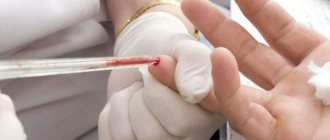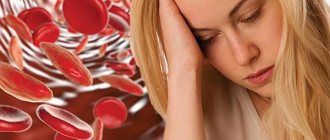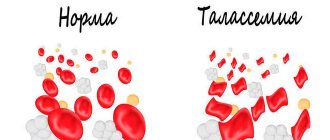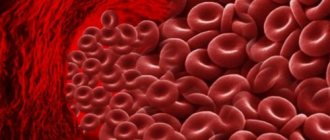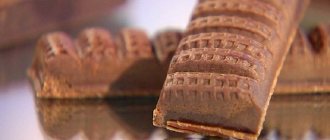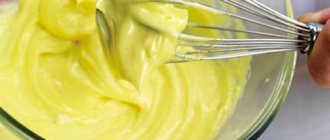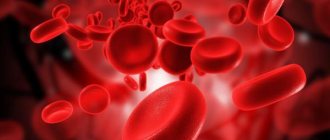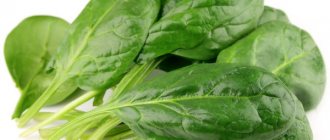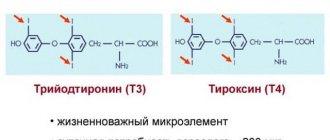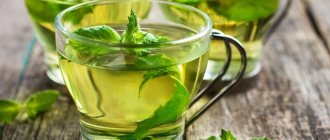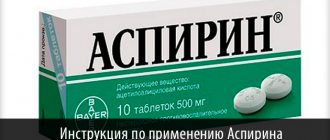The main function that hemoglobin performs is the supply of oxygen from the lungs to the cells. A decrease in hemoglobin levels necessarily leads to oxygen starvation of tissues (hypoxia), which entails memory impairment, drowsiness, regular dizziness and other unpleasant symptoms that disrupt the usual rhythm of life and worsen general well-being. The norms of hemoglobin in the blood are as follows:
- men - 130-170 g/l of blood;
- women - 120-160 g/l of blood;
- pregnant women - 110-150 g/l of blood.
At the first symptoms of low hemoglobin, you should consult a doctor who will help you adjust your diet, which largely determines the composition of your blood, and prescribe special medications.
Symptoms of low hemoglobin and consequences
The therapeutic diet is designed to eliminate iron deficiency, strengthen the immune system, and provide the body with energy. The diet is based on consuming large amounts of protein and calories.
Important! To increase hemoglobin, eating foods containing iron is not enough. It is necessary to add to your diet foods rich in vitamin C, B vitamins, zinc and copper - these compounds are involved in the process of iron absorption.
The energy value of the daily diet with low hemoglobin in adults should be 3000-3500 kcal. The patient should consume at least 130 g of protein, and about 120 g of healthy fats. You should stick to fractional meals.
The basis of the diet for low hemoglobin in adults is:
- vegetables;
- fruits and berries;
- cereals;
- watermelon;
- legumes;
- mushrooms;
- nuts and seeds;
- dried fruits;
- animal sources of iron: beef and chicken liver, veal, chicken, sea fish, egg yolks, shrimp, crayfish, caviar.
There are no restrictions on the culinary processing of meat dishes: products can be steamed, boiled, baked. But fruits are recommended to be consumed only raw.
Patients should avoid alcoholic beverages, tea, milk and kefir, and give preference to clean water, herbal infusions and compotes.
A woman needs to receive almost 2 times more iron per day than a man, so a woman’s diet should contain more animal products. A woman should pay special attention to her diet in phase 1 of the cycle: after menstruation, the hemoglobin level decreases greatly, therefore, from days 1 to 7 of the cycle, pomegranate juice should be included in the diet, and the proportion of cereals and meat products in the diet should be increased. If a woman suffers from very heavy periods, it is impossible to increase hemoglobin levels with nutrition alone.
With age, the ability to absorb minerals from food decreases, so a therapeutic diet should include a maximum of iron-rich foods. The so-called non-heme iron contained in foods of plant origin is practically not absorbed by older people, so people over 60 years of age with low hemoglobin should give preference to sources of iron of animal origin.
On a note! The absorption of iron is affected by the temperature of the food: the food must be warm.
Best sources of iron for older adults:
- rabbit;
- turkey;
- veal;
- beef;
- egg yolks;
- pork and beef liver;
- beef tongue, heart, kidneys;
- sea fish and seafood.
To prevent constipation, you should eat a large portion of fresh vegetables along with meat products.
The diet to increase hemoglobin in old age should also include:
- vegetables;
- greenery;
- Rye bread;
- fruits;
- berries;
- dried fruits.
With age, bones lose density, so the patient should consume a lot of calcium. Because this mineral interferes with the absorption of iron from food, sources of calcium and iron should be consumed separately.
The level of hemoglobin in the plasma of an infant directly depends on the mother’s nutrition. A nursing mother should adjust her diet at a doctor’s appointment to increase hemoglobin levels in herself and her baby.
A child's diet with low hemoglobin consists not only of sources of iron, but also of foods rich in manganese, zinc, copper, folic acid and vitamin C.
The children's treatment menu should include:
- veal;
- chicken;
- buckwheat;
- fruits;
- legumes;
- sea fish, caviar;
- a variety of vegetables;
- beef, veal and chicken offal.
For information! A child's meals should be divided: on average, 5 meals are enough for a child to absorb all the necessary calories.
If hemoglobin is low, tea (all varieties) should be excluded from the baby’s diet. Instead of tea, your child can be given milk-free cocoa, blackcurrant compote, and fruit and vegetable juices diluted with water. You should also remove sugar-rich foods, buns, sweets and cookies from your diet. For dessert, instead of sweets, you can give your baby dried fruits and nuts.
The diet of adolescents with low hemoglobin does not differ from medical nutrition for children, however, during the period of hormonal changes, nutrition cannot fully influence the level of hemoglobin in plasma. Adolescents are usually prescribed iron supplements along with a medical diet.
During pregnancy
A diet to increase hemoglobin during pregnancy should be high in calories. In the last stages of pregnancy, the stomach cannot accommodate a large volume of food, so meals should be divided and consist of 5-6 meals.
The basis of the therapeutic diet of a pregnant woman with low hemoglobin:
- cereals;
- beef, as well as beef liver, kidneys and tongue;
- fresh vegetables;
- greenery;
- egg yolks;
- seaweed;
- fruits;
- Cod liver;
- fish.
does not suffer, you can add a small amount of dark chocolate or hematogen to your diet - healthy sweets have a beneficial effect on hemoglobin levels.
Black tea and coffee should be replaced with fireweed tea, decoctions of rosehip, dandelion or nettle; you can also drink juices from red vegetables and fruits.
Not all foods that increase hemoglobin can be eaten by pregnant women, because some of them can harm the health of the mother and child.
During pregnancy the following are prohibited:
- Industrially grown melon, watermelon and mushrooms. The products are full of nitrates and can cause poisoning.
- Shrimp and caviar. Seafood contains mercury, which interferes with the proper development of the fetal nervous system.
- Bloody meat and raw fish. Raw animal products increase the risk of parasite infection.
You should not overindulge in foods rich in calcium, because calcium reduces the absorption of iron.
For oncology
Surgeries and chemotherapy negatively affect the level of hemoglobin in the blood plasma. Cancer leads to weight loss, and patients often suffer from exhaustion, so the energy value of therapeutic nutrition for oncology is very high. On average, a patient should eat up to 300 g of pure protein and about 600 g of carbohydrates per day; the diet is selected strictly individually. The diet should be very varied, you should also drink a lot of water.
The diet of a cancer patient with low hemoglobin includes:
- beef by-products;
- veal, beef, rabbit, turkey;
- vegetables;
- seaweed;
- nuts;
- legumes;
- fruits and berries;
- honey.
Advice! Patients are recommended to eat 1 tablespoon of oat or wheat sprouts per day: the product contains B vitamins necessary for the absorption of iron.
In the last stages of cancer or with gastrointestinal pathologies, the only way to increase hemoglobin in a cancer patient is to take iron supplements.
For an adult, the normal hemoglobin level is as follows:
- for women – from 120 to 150 g/l;
- for men – from 130 to 160 g/l.
In old age, the hemoglobin level in most cases increases up to 180 g/l - this is not considered a dangerous deviation and, as a rule, is assessed as a “stable norm”. In pregnant women, the range of normal levels also expands slightly and can range from 110 to 155 g/l - this is due to temporary changes in blood flow.
Doctors identify the following symptoms of low hemoglobin:
- a feeling of constant fatigue (even if a person sleeps a fairly large amount of time and follows a day and night routine);
- regular headache without changes in blood pressure;
- manifestation of yellowness of the skin;
- deterioration of skin and nails;
- muscle weakness;
- dyspnea;
- slight decrease in blood pressure.
- In critical cases, a person may lose consciousness.
Why is low hemoglobin so dangerous? Oxygen starvation of all organs, the brain, which accelerates the process of deactivation of nerve cells. At the same time, muscle atrophy develops, the walls of blood vessels become thinner and less resistant to rupture (with low hemoglobin, subcutaneous bleeding in the form of capillary networks often occurs).
Also, low hemoglobin may be accompanied by persistent angina and the development of other chronic diseases of the cardiovascular system.
Low hemoglobin is especially dangerous for newborns. In the first few months, the norm for them is from 180 to 240 g/l. This is due to the fact that at this time their nervous system is still actively developing and this is what oxygen is used for. A drop in hemoglobin to 130 g/l can trigger the development of brain pathologies.
It is worth considering that an increased level of hemoglobin also harms the body. In this case, blood viscosity increases, increasing the risk of thrombosis. Also, increased hemoglobin is accompanied by nervousness and decreased resistance to stress.
What foods increase hemoglobin in the blood?
Signs of low hemoglobin include fatigue, headache, weakness, tinnitus, sleep disturbances and poor appetite.
All these signs are known to many because, according to statistics, 20% of the population suffers from anemia, and the majority of them are women. There are many reasons for this: pregnancy, breastfeeding, menstruation, spring vitamin deficiencies. For anemia, it is recommended to eat a lot of animal products: meat, liver, butter, cream.
Beef takes the lead. It's beef, not veal. 22% of iron is absorbed from it. Slightly less than 15-20% for veal, beef liver, and pork. Any chicken or pork liver is useful. It itself is a hematopoietic organ, which means it contains a lot of iron.
The following foods have a high iron content: nuts, strawberries, grapes, raspberries, garlic, wheat, pomegranate, bananas. You can include them in your daily diet.
The product that increases hemoglobin is beets. Consumption of beets should be long-term; you need to eat beets regularly for four months. The daily norm is 100-150 g of boiled beets. You can include it in this quantity in salads, or replace it with thirty grams of beet juice.
Watermelons and melons increase hemoglobin. During the season, eat them yourself and feed your family. But just choose melons and watermelons wisely, since very often their ripening is accelerated with the help of nitrates.
Apples are also a source of iron. Every person needs to consume apples every day, and those suffering from anemia need to eat half a kilogram. It is better not to drink apples with tea for one to two hours. Tea slows down the absorption of iron.
Rowan is very useful for anemia. Thanks to its high vitamin C content, it promotes the absorption of iron from foods. Rowan berry juice is taken one tablespoon four times a day.
Rosehip infusion. The infusion is prepared in a thermos and left to infuse overnight. At the rate of two tablespoons of dried rose hips per glass of boiling water. Drink 0.5-1 glass per day. In the morning, drink rosehip infusion along with medications and foods.
The product that increases hemoglobin is carrots, but it should be consumed together with sour cream. Both adults and children love this salad. But a greater effect can be achieved from carrot juice. You need to drink 100-150 ml per day. Before meals.
You can increase hemoglobin with nettle. You can prepare salads from young nettles. A tablespoon of crushed dried nettle is poured in and left for thirty minutes. Drink a tablespoon three times a day.
A few more traditional medicine recipes. Take three tablespoons of crushed dried nettle leaves, one tablespoon of flower pollen, and two tablespoons of honey. Proportion 3: 1: 2. Take a teaspoon three times a day before meals, wash down with water.
A product that increases hemoglobin is walnuts. To get a good effect, you need to eat 100 g of chopped walnuts mixed with honey. This is the daily norm, it should be divided into 3-4 doses.
For the complete absorption of iron, the human body needs vitamins. In addition, vitamins speed up metabolism. Vitamin C promotes the absorption of iron from meat products. Therefore, meat consumption must be combined with vegetables. And after lunch, it’s good to drink a glass of orange juice, or snack on strawberries or directly from a citrus fruit. Honey, especially dark varieties, promotes good absorption of iron.
Calcium and tannin interfere with the absorption of iron, so products that increase hemoglobin cannot be combined with milk, tea or coffee. Tea reduces the absorption of iron by 40% from animal products, and by 70-100% from plant products; for these reasons, it is recommended to drink tea 30-40 minutes after meals. Be healthy!
Top 10 healthy vegetables and fruits
A specially selected balanced diet for low hemoglobin forms the basis of therapy. However, if the levels are extremely low, a medical diet alone will not help correct the situation, and treatment will be based not only on medical nutrition, but also on taking iron supplements prescribed by a doctor.
It is best to include in your diet those vegetables and fruits that contain iron and other metals as trace elements. The same zinc and magnesium regulate hematopoietic function, and iron is used to produce hemoglobin. Also, those vegetables and fruits that contain a sufficiently high content of vitamins PP, K, C, and E help increase its concentration.
Beet
Beet juice increases hemoglobin very well. It is enough to consume at least 20 - 30 milliliters per day in order to increase hemoglobin by 10 g/l within a week.
Another feature of beets is that they retain their beneficial properties even when cooked, and they also provide the body with the lion’s share of indigestible fiber (which helps normalize intestinal function, thereby receiving more micronutrients from food).
Pomegranate
Including pomegranate fruits in the diet helps normalize hematopoietic function and raise blood pressure. Pomegranate also perfectly raises hemoglobin.
Doctors also say that pomegranate helps prevent headaches. But it is grains that should be consumed, but it is better to avoid concentrated pomegranate juice - its use leads to a sharp increase in hemoglobin levels in a short period of time, which can cause angina pectoris. If you do drink juice, then dilute it with water in a ratio of 1 to 3.
Apples
Of the common fruits, apples have the highest concentration of iron. It is because of this that a cut apple quickly becomes covered with a brown film (or rather, its pulp). This occurs due to the oxidation of iron molecules.
How many apples should you eat daily to increase hemoglobin? About 3 – 4 medium-sized fruits will be more than enough. If you give preference to concentrated juice, then you should drink it in small portions - only 20 - 30 milliliters. Apples are also an excellent source of vitamins A, C, E and PP.
Bananas
Bananas are also good for hemoglobin because they contain a large amount of folic acid (vitamin B6), which stimulates the absorption of iron. Without this vitamin, ferum is simply not synthesized into hemoglobin and literally immediately after consumption it is excreted along with feces.
For those who do not like bananas or who are not recommended to eat them (for example, with diabetes, obesity, chronic diseases of the gastrointestinal tract), you can prepare jelly from dried bananas. The only caveat is that this jelly is first washed 2 or 3 times with water (standing for at least 20 - 30 minutes). This will help retain all the fiber but reduce the concentration of carbohydrates.
Grapefruit
Grapefruit is a source of vitamins C and PP (contained in the zest and just gives it a bitter taste).
Also, eating citrus fruits (oranges, lemon and others) speeds up metabolism and helps absorb iron faster.
Just don’t overuse grapefruit - excess ascorbic acid also harms the body (increases blood viscosity, provokes red blood cell adhesions).
Ginger
Ginger root also has a positive effect on the blood. Moreover, you need to consume only 5–10 grams of this product per day to improve the functioning of the cardiovascular system and prevent oxygen starvation. Ginger also cleans blood vessels.
It is recommended to consume ginger fresh or dried, but not canned (upon contact with acetic acid, the essential oils included in the composition break down into their simplest elements).
Garlic
It is a good source of vitamin C and also contains a wide range of essential oils and resins that help the body absorb iron faster.
Another feature of garlic is that it accelerates the process of removing toxins (including inorganic types), which can provoke a sharp decrease in the level of hemoglobin in the blood to a critical level.
Sauerkraut
It contains ascorbic acid, and in almost the same concentration as in lemon (per kilogram - about 350 milligrams of vitamin C).
And red sauerkraut also contains a small amount of iron - it is more preferable for increasing hemoglobin.
Sea kale
Rich in iron, zinc, magnesium, vitamin PP and folic acid. Many doctors consider this product to be the most beneficial for the cardiovascular system.
Every day it is recommended to eat at least 30 grams of seaweed in any form (pickled and pickled are the most common options).
Spinach
Among greens, it is the richest in iron (almost 12 mg per 100 grams of fresh product).
It is recommended to consume it fresh, adding it to various types of salads. Goes well with olive oil and garlic.
What foods can raise hemoglobin in a child?
Every person has probably heard about iron deficiency anemia and knows that it is bad. Hemoglobin, found in red blood cells, delivers oxygen from the lungs to the brain, heart, kidneys and muscles. In cases where hemoglobin contains little iron, anemia occurs. In children under 5 years of age, hemoglobin should be above 110 g/l, and in children over 5 years of age - above 120 g/l.
Instructions
1 From birth, a child has a certain supply of iron, which he received from his mother several months before birth, while in the womb. Nature has thought of everything in such a way that this reserve should be enough for the first six months of a child’s life. After six months, the baby receives the necessary vitamins and elements from complementary foods.
2 A pregnant woman should first of all pay attention to her hemoglobin. If its level is low, then the child’s level will also be low. The same thing occurs with premature birth and the birth of twins. A doctor’s recommendations will help you get rid of anemia; most often, nutritional correction is enough; in extreme cases, medications that increase hemoglobin levels will be prescribed.
3 More recently, experts believed that in case of anemia, it is necessary to introduce hemoglobin-increasing foods that contain large amounts of iron into your diet. But over time, doctors realized that the absorption of iron by the body is important. Of the total amount of iron entering the body, only 10% is absorbed. Some types of iron are not absorbed at all.
4 The first place in iron content is occupied by beef tongue, liver and meat. The amount of absorbed iron from veal is 22%, slightly less from beef, rabbit and turkey meat, from fish - this amount is 11%. In addition, strawberries, pomegranates, watermelons and pumpkin are rich in iron, as well as dill, spinach, parsley and green onions.
5 To get rid of anemia in a 6-month-old baby, make meat and fish purees with the addition of herbs. When cooking meat and fish, added herbs will help preserve iron. In addition, feed your child chicken yolks, buckwheat, oatmeal, legumes, and black bread. Feed iron-rich fruits such as plums, peaches, apples and dried fruits more often.
6 You should know that foods high in vitamin C do not themselves affect the hemoglobin content in the blood, but they contribute to better absorption of iron by the body. Therefore, do not forget that foods rich in iron should be combined with orange or tomato juice; you can add lemon juice and bell pepper to cooked food.
7 There are also foods that interfere with the absorption of iron - these are dairy products, cheese, eggs, tea and coffee. Therefore, you should not take them at the same time as eating iron-rich foods.
8 You can solve the problem of low hemoglobin using folk remedies. Tea made from buckwheat or dandelion leaves, rosehip infusion with the addition of lemon juice and honey, sprouted wheat grains, dried apricots, and raisins help well. You can try grinding walnuts and buckwheat in equal parts in a coffee grinder. Add a glass of honey and stir. Take a spoon three times a day. Search Medical articles on the Site are provided for reference purposes only and are not considered sufficient advice, diagnosis, or medically prescribed treatment.
What lowers and increases the level?
Not all foods can be consumed with low hemoglobin: some of them can lower this indicator.
| Foods that increase hemoglobin | Products that lower hemoglobin |
|
|
Drinks also affect hemoglobin. Green and black tea have a negative effect on the indicator, and rosehip decoctions, compotes and juices from red vegetables bring hemoglobin back to normal.
Fruits
Fruits are an obligatory attribute of therapeutic nutrition, but not all of them can be consumed with low hemoglobin.
| Fruits that increase hemoglobin | Fruits that lower hemoglobin |
|
|
Fruits are useful to eat fresh or in the form of juices. Baked fruits are not beneficial.
Menu for increasing performance
The therapeutic diet is selected strictly individually at a doctor’s appointment, but for all patients there are basic principles of nutrition for low hemoglobin.
| Sample menu for 1 day | |
| Breakfast | Boiled meat, cereal porridge, 1 fruit, vegetable juice. |
| Lunch | Baked fish, vegetable salad, fruit juice. |
| Dinner | First course (borscht, fish soup, chicken pea soup), meat cutlets, vegetable salad, berry compote. |
| Afternoon snack | A glass of berries or 1 large fruit, rosehip decoction. |
| Dinner | Fish cutlets, vegetable casserole, rosehip infusion. |
| Second dinner | Fresh vegetable salad or 1 unsweetened fruit. |
The number of meals is selected individually depending on the state of the gastrointestinal tract and the amount of food eaten.
What should be excluded from the diet?
A decrease in hemoglobin levels is facilitated by:
- Almost all dairy products. They contain protein and complex carbohydrates, which slow down the process of hemoglobin synthesis. Milk also thickens the blood.
- Pasta. This also includes all cereals. They interfere with the absorption of iron, oxidizing it while still in the gastrointestinal tract. Such a micronutrient is no longer suitable for the formation of hemoglobin cells.
- Chicken eggs. It is the protein they contain that lowers hemoglobin. In principle, any food based on protein slows down the absorption of iron.
- Wheat flour and all products derived from it. Regular consumption of wheat bread leads to a decrease in hemoglobin by an average of 15 g/l. Therefore, it is better to give preference to black or coarsely ground bread (bran).
Hemoglobin norm in women by age (table)
The level of hemoglobin in the blood of women depends on lifestyle, individual characteristics of the body, and age. The value of the indicator ranges from 110-160 g/l. So, for a girl under 12 years of age, 105-150 g/l is considered normal. In a woman over 50 years of age, the value increases to 120-160 g/l. The menstrual cycle, pregnancy and menopause can also affect the amount of hemoglobin in the blood.
The level of hemoglobin in the blood of an adult is a relatively stable indicator. The amount of the substance in a woman’s blood is lower than that of a man. This happens because female sex hormones are able to weakly stimulate the formation of red blood cells. The small amount of hemoglobin is also affected by the fact that a woman has less muscle mass. To maintain a normal state, so much oxygen is not required.
Experts have identified a number of natural factors that can lead to an increase or decrease in the amount of hemoglobin. The list includes:
- Playing sports. If a woman engages in active sports, the number of red blood cells in the blood increases. The hemoglobin level reaches the upper limit of normal.
- Menstruation. During the first few days of menstrual bleeding, the amount of hemoglobin in the blood decreases to 110 g/l. This will not be a deviation. Within a week after your period ends, the reading will return to normal and be 120 g/L or higher.
- Nutrition. Your daily diet needs to be carefully monitored. If a woman is prone to iron deficiency anemia, drinking large amounts of tea, coffee, dairy and flour products will lead to a decrease in hemoglobin below the permissible norm. All of the above foods become a natural obstacle to the absorption of iron by the body.
- Smoking. If a woman is an active smoker, the amount of hemoglobin in the blood will be increased. In this way, the body compensates for the lack of oxygen in the lungs. Despite the fact that the analysis shows a large amount of iron-containing protein, a person may develop oxygen starvation.
Hemoglobin is increased
The amount of hemoglobin must be monitored as carefully as possible. If the indicator value increases, blood viscosity increases. This leads to difficulties in collecting analyses. An increase in hemoglobin may indicate the presence of a number of diseases, the list of which includes:
- diabetes ;
- Congenital heart defect;
- heart or pulmonary failure;
- intestinal obstruction;
- increased number of red blood cells in the blood;
- presence of burns.
Dehydration can also lead to an increase in hemoglobin levels. In this case, a high level of the indicator is observed, but it is false. To combat the problem, it is necessary to adjust the amount of fluid consumed or eliminate the problem leading to dehydration. When the pathology can be eliminated, the hemoglobin level will return to normal.
The reason for the increase in the value of the indicator may also be living at a high altitude above sea level. In this case, the increase in the value of the indicator occurs due to a decrease in the amount of oxygen entering the body.
If serious deviations from the norm are detected, additional studies are required. They are sent to determine the cause of the violation. An increase in hemoglobin levels is only a symptom. It is useless to treat him.
What to eat before donating blood for analysis?
In order for the test result to be as reliable as possible, you need to prepare in advance for donating blood for testing.
1-2 days before visiting the laboratory, you should reduce the amount of protein consumed. The diet should consist of a small amount of poultry or fish, unsweetened fruits, fresh vegetables and cereals. You are allowed to drink rosehip decoction and clean water without gas.
The test is taken strictly on an empty stomach after abstaining from food for 8-12 hours; you can drink water during this period.
Features of nutrition during pregnancy
During pregnancy, almost all vitamins are rapidly consumed in a girl’s body, including folic acid (B6). It is the last element that needs to be paid the most attention.
When carrying a child, folic acid is primarily used by the endocrine system to normalize the balance of sex hormones (which regulate the pregnancy process itself and prevent the premature birth of a child).
So, it is necessary to include bananas and fish in your diet (it contains omega-3 acids, which help absorb B vitamins).
The same goes for vegetables and fruits that contain iron. Some of these microelements are used by the body to form the cardiovascular system of the unborn child, so in women during this period, hemoglobin is constantly reduced (and remains so until the beginning of the third trimester of pregnancy).
How to increase hemoglobin
Before looking for ways to increase hemoglobin, it is necessary to determine the causes of iron deficiency. Doctors usually identify three main causes of low hemoglobin, or, as it is also called, anemia or anemia.
Lack of iron in food
Most iron is found in animal products, and in smaller quantities in plant foods. Therefore, low hemoglobin is most often found in patients who have given up meat or are vegans. In people who do not consume animal products, the condition is often aggravated by a lack of vitamin B12, which is also found in meat.
Poor absorption of iron
In some cases, low hemoglobin also occurs in people who eat enough iron-containing foods. However, for some reason, the useful mineral is simply not absorbed in the required quantity. Most often this is associated with pathologies in the duodenum and upper small intestine. There are also problems after operations on the gastrointestinal tract. Absorption can indirectly be affected by the presence of diseases such as pancreatitis and atrophic gastritis. In some cases, the absorption of iron is prevented by an excessive amount of microelements that inhibit this mineral - calcium, phosphates, etc.
Blood loss
Due to bleeding, especially if it is prolonged, iron leaves the body in greater quantities than it enters through food. This can be a sudden loss of blood, for example, in the event of an accident, or it can occur constantly. If the patient immediately notices nasal and uterine bleeding and consults a doctor before the onset of anemia, then with internal bleeding, for example due to an ulcer, the problem may go unnoticed for a long time.
Sometimes a serious illness, including erosions and tumors, can be hidden under a low level of hemoglobin caused by bleeding. It is for this reason that before increasing hemoglobin on your own, it is important to consult a doctor and get tested to rule out other diseases.
Iron deficiency during pregnancy has its own characteristics and nuances. Read: Latent iron deficiency and iron deficiency anemia.

